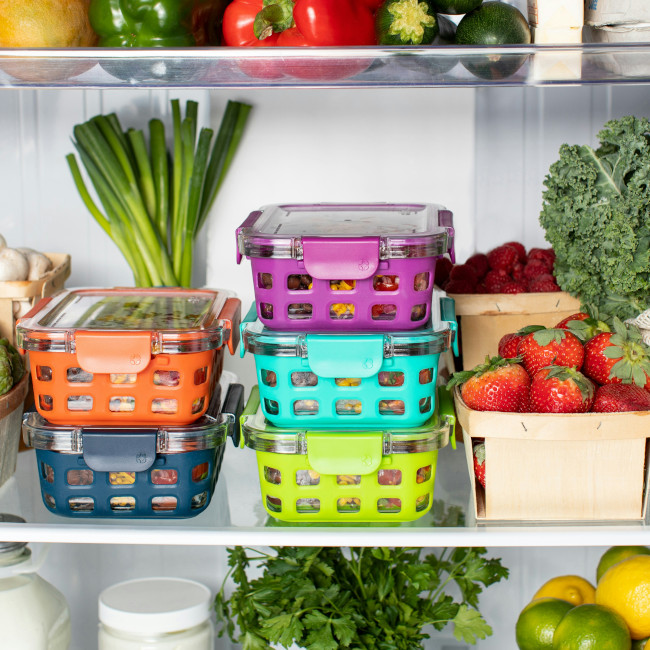Useful Resources
What Temperature Should a Fridge Be in the UK?
When it comes to chilled food safety and storage, maintaining the correct temperature in your fridge is crucial. Whether you’re a meticulous chef or someone who just likes their food to stay fresh, understanding the ideal fridge temperature can make a significant difference. In the UK, guidelines and best practices help ensure that your food remains safe to eat and retains its quality for as long as possible. Our guide explores the recommended fridge temperatures, the reasons behind these guidelines, and tips on how to maintain the correct temperature in your fridge.
Ideal Fridge Temperature: The Basics
The Food Standards Agency (FSA) in the UK recommends that refrigerators should be set to 5°C or below. This recommendation is grounded in extensive research and testing aimed at preventing foodborne illnesses. Pathogenic bacteria, which cause food poisoning, tend to grow rapidly at temperatures between 8°C and 60°C. By keeping your fridge at 5°C or lower, you significantly reduce the risk of bacterial growth.
However, it’s not just about preventing foodborne illnesses. Keeping your fridge at the right temperature also helps in preserving the texture, flavour, and nutritional value of your food. Dairy products, fresh fruits, vegetables, and meats can all suffer in quality if stored at incorrect temperatures.
Why 5°C or Lower?
1. Food Safety – The primary reason for maintaining a fridge temperature of 5°C or lower is to inhibit the growth of harmful bacteria such as Salmonella, E. coli, and Listeria. These pathogens can cause severe food poisoning, leading to symptoms such as vomiting, diarrhoea, and in severe cases, even death.
2. Food Preservation – Many foods are perishable and can spoil quickly if not stored properly. A lower temperature helps slow down the spoilage process. For instance, milk and dairy products remain fresh for a longer period, and meats do not spoil as quickly.
3. Nutritional Value – Certain vitamins and nutrients can degrade when exposed to warmer temperatures. By keeping your fridge at the recommended temperature, you help preserve the nutritional content of your food.
How to Maintain the Right Temperature
Maintaining the correct fridge temperature is not just about setting the thermostat and forgetting about it. Here are some tips to ensure your fridge stays at the ideal temperature:
1. Use a Fridge Thermometer – Even if your fridge has a built-in thermometer, it’s a good idea to use an additional fridge thermometer. Place it in the central part of the fridge to get an accurate reading.
2. Regularly Check the Temperature – Make it a habit to check the temperature regularly, especially if your fridge is older or heavily stocked. Fluctuations in temperature can occur, especially if the door is frequently opened.
3. Don’t Overfill the Fridge – Air needs to circulate to keep the temperature consistent. Overfilling your fridge can obstruct air flow, causing hot spots and uneven cooling.
4. Keep the Door Closed – Avoid keeping the fridge door open for extended periods. Each time the door is opened, cold air escapes and warm air enters, causing the temperature to rise.
5. Proper Storage – Store food in a way that allows air to circulate. Don’t push items against the back of the fridge, as this can block air vents.
6. Regular Maintenance – Clean the coils on the back of your fridge regularly. Dust and grime can affect the efficiency of your fridge’s cooling system.
Common Issues and How to Address Them
Sometimes, even with the best efforts, your fridge might not maintain the correct temperature. Here are some common issues and how to address them:
1. Thermostat Problems – If your fridge isn’t cooling properly, the thermostat might be faulty. Consider replacing it if necessary.
2. Blocked Vents – Ensure that air vents inside the fridge are not blocked by food items. Blocked vents can lead to uneven cooling.
3. Dirty Coils – The coils on the back of the fridge need to be clean to function efficiently. Clean them regularly to ensure proper cooling.
4. Old Fridge – Older fridges might struggle to maintain the correct temperature. If your fridge is old, it might be time to invest in a new, more efficient model.
Seasonal Considerations
In the UK, seasonal changes can affect how your fridge operates. During summer, your fridge might need to work harder to maintain the correct temperature, while in winter, it might need less effort. Here are some seasonal tips:
1. Summer – Ensure your fridge is not placed near heat sources such as ovens or direct sunlight. Check the temperature more frequently during heatwaves.
2. Winter – While it’s less common, make sure your fridge is not in an unheated garage or shed where temperatures can drop below freezing, as this can affect its performance.
Conclusion
Maintaining the correct fridge temperature is essential for food safety, preservation, and nutritional value. In the UK, the recommended fridge temperature is 5°C or lower. By following the tips and guidelines provided in this post, you can ensure that your fridge operates efficiently, keeping your food safe and fresh.
Remember, a little effort goes a long way in preventing foodborne illnesses and ensuring that your food retains its quality. Regularly checking the temperature, not overfilling your fridge, and performing routine maintenance are simple steps that can make a big difference. Keep your fridge at the right temperature, and enjoy peace of mind knowing that your food is stored safely.


